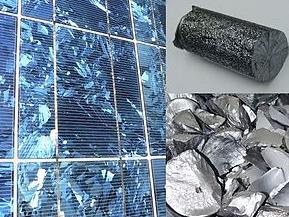Polysilicon vs. Silicon: What's the Difference?
In the realm of materials science, particularly within the sectors of renewable energy and electronics, the distinction between polysilicon and silicon forms a foundational understanding. Though both materials share the same elemental base—silicon—their properties, applications, and manufacturing processes reveal significant differences. Let's dissect these differences to clarify why each material holds its unique place in modern technology.

The Basics: Silicon in its Purest Form
Silicon, the second most abundant element in the Earth's crust, is a semiconductor known for its versatile electrical properties. In its purest form, silicon is a single-crystal substance. This purity and crystalline structure make it highly effective in electronic devices, where the flow of electricity needs to be carefully controlled. The process to produce this monocrystalline silicon is intricate and costly, involving the reduction of silica into silicon and the careful growth of single crystals.
Polysilicon: A Symphony of Crystals
Polysilicon, on the other hand, consists of multiple small silicon crystals, giving it a polycrystalline structure. This distinction is crucial because it affects how electrons move within the material. Polysilicon is created through a less complex process compared to monocrystalline silicon, involving the deposition of purified silicon gas onto a substrate, resulting in a material that is versatile and less expensive but with lower electrical conductivity.
Performance in the Spotlight: Efficiency vs. Cost
When it comes to solar panels, the efficiency of converting sunlight into electricity is paramount. Monocrystalline silicon solar panels are more efficient due to their uniform crystalline structure, with efficiency ratings typically between 18% and 22%. Polysilicon panels, while slightly less efficient (with ratings around 15% to 17%), benefit from a lower production cost, making them a popular choice for large-scale solar installations where space is not a limiting factor.
Durability and Longevity: A Material's Lifeline
Both materials boast impressive durability, but the single-crystal structure of monocrystalline silicon tends to be less susceptible to microcracks, a common cause of long-term degradation in solar panels. This resilience contributes to the slightly higher cost of monocrystalline silicon panels but also to their longer lifespans, offering a better long-term investment for some applications.
Market Dynamics: Supply, Demand, and Environmental Considerations
The global market for silicon materials is influenced by the demand for high-efficiency electronics and renewable energy solutions. The production of monocrystalline silicon is more energy-intensive and contributes to a higher carbon footprint compared to polysilicon, a factor increasingly considered in the push for sustainable technology development.
The Verdict: Polysilicon vs Silicon
Choosing between polysilicon and monocrystalline silicon is a matter of balancing efficiency, cost, and application requirements. Polysilicon offers a cost-effective solution for large-scale solar power applications and some electronics, where its slightly lower efficiency is offset by its lower price point and versatile properties. Monocrystalline silicon remains the material of choice for high-efficiency applications, particularly in consumer electronics and premium solar panels, where performance and longevity are non-negotiable.
As technology advances and the demand for renewable energy and high-performance electronics continues to grow, the development of both polysilicon and monocrystalline silicon will remain at the forefront of materials science, each playing a critical role in shaping the future of technology.